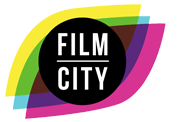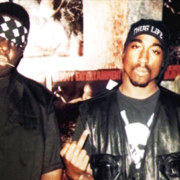“If you don’t live and breathe it, then don’t bother.”
A profile of international award-winning film producer and director Michele D’Acosta, whose credits include Fetishes, Kurt and Courtney, Biggie and Tupac, Moonbug and No Distance Left to Run.
“A magical thinker” – that’s how Michele D’Acosta defines the role of the film producer, “someone who is singleminded, enthusiastic, tenacious and passionate in pursuit of their vision”. The rollcall of films produced by D’Acosta suggests that she fulfils all of the necessary criteria.
Her career began in the press office of Amnesty International. This environment gave her access to great stories, and the opportunity to pitch a series of short films to Channel 4 who were keen to collaborate with the charity. This led to a placement as a trainee TV producer programme for Channel 4’s ground-breaking documentary series Dispatches, followed by work for the BBC, and a period in the Soviet Union documenting the major political changes taking place in the early 1990s.
 She has worked closely with acclaimed director Nick Broomfield on three documentaries: Fetishes (1996), filmed at an S & M parlour in New York, Kurt and Courtney (1998) about the volatile life and times of grunge musician Kurt Cobain and his wife Courtney Love, and perhaps most memorably, Biggie and Tupac (2002) about the murdered rappers Christopher ‘Notorious B.I.G’ Wallace and Tupac Shakur.
She has worked closely with acclaimed director Nick Broomfield on three documentaries: Fetishes (1996), filmed at an S & M parlour in New York, Kurt and Courtney (1998) about the volatile life and times of grunge musician Kurt Cobain and his wife Courtney Love, and perhaps most memorably, Biggie and Tupac (2002) about the murdered rappers Christopher ‘Notorious B.I.G’ Wallace and Tupac Shakur.
After reading about Tupac’s shooting the day after it took place and sensing that this was a story she wanted to tell, D’Acosta embarked on extensive research. She became intrigued by the relationships within Tupac’s family, his mother’s membership of the Black Panthers, and the rapper’s quest to share political messages through his music. “The Black Panthers manifesto was that black people don’t have black power”.
 Her approach was to interview friends and teachers who knew Tupac as a child rather than focussing solely on music industry contemporaries: “It was too easy to sensationalise things and go down that route, I knew that was the angle most film makers would take.”
Her approach was to interview friends and teachers who knew Tupac as a child rather than focussing solely on music industry contemporaries: “It was too easy to sensationalise things and go down that route, I knew that was the angle most film makers would take.”
Nick Broomfield has described D’Acosta as ‘the Mistress of Charm’ and praised her meticulous approach: “I thought she was very talented, very committed in her work…Michele has a very thorough way of working and a very detailed mind.”
What has she learnt most from someone renowned for his ability to construct stories that often feature challenging and unwilling participants?
“One of his key techniques is knowing how to control the energy in the room. There’s lots of planning and preparation by the production team behind the scenes to build a momentum, and then he often takes the interviewee by surprise once the camera is rolling,” she explains.
“The tension is created, and captured in the frame. He has a skill for manipulating a subject, but it’s to get to the truth and capture crucial moments.”
A contrasting approach was needed for No Distance Left to Run, the documentary about Blur’s triumphant comeback concerts culminating at Glastonbury and Hyde Park on which D’Acosta was a co-executive producer.
“The band were exhausted, relationships were fragile, there were lots of obstacles. It was really important to make them feel comfortable and relaxed.”
As well as her belief in the power of using documentary film for social change, D’Acosta is also committed to improving the lives of others through other means. She put filmmaking to one side to help people directly through her involvement in a charitable project working with polio survivors in Sierra Leone.
Initiatives like this have altered her perspective – she’s no longer satisfied with cinema as the sole platform through which she can share stories and highlight issues she cares about. “As human beings we have a responsibility to help raise awareness by whatever means necessary.”
She is currently immersed in researching a documentary about the life of black British boxer Randolph Turpin, a world middleweight champion in the 1950s whose sporting achievements were overshadowed by his troubled personal life. “I’m very drawn to the challenge of telling his story, it has a great deal of resonance on so many levels, particularly the racism he fought in and out of the ring.”
D’Acosta grew up in East Sussex and still spends as much time in Brighton as she can. “What is it about this city? Maybe it’s in the water, or the air, the people all seem to feel it.” She points to a creative and collaborative energy rooted in Brighton’s history of film-making, as well as an acceptance of people that enables her to feel at home.
She strongly believes that more should be done to invest in young people seeking ways into the film industry, and that it is the responsibility of people like her to nurture and encourage new talent.
However, D’Acosta also has a warning. “It’s hard work so if you aren’t 100% dedicated to it, if you don’t live and breathe it, then don’t bother. All other skills you can learn, but passion and dedication – that cannot be taught.”
MICHELE’S TOP FIVE TIPS FOR ASPIRING PRODUCERS
Work out why you want to make the film – what’s unique about the perspective you can offer?
Look for the alternative angle
Be accurate – don’t distort material or take quotes out of context.
Build a piece of work that can leave a legacy.
Be on time!







